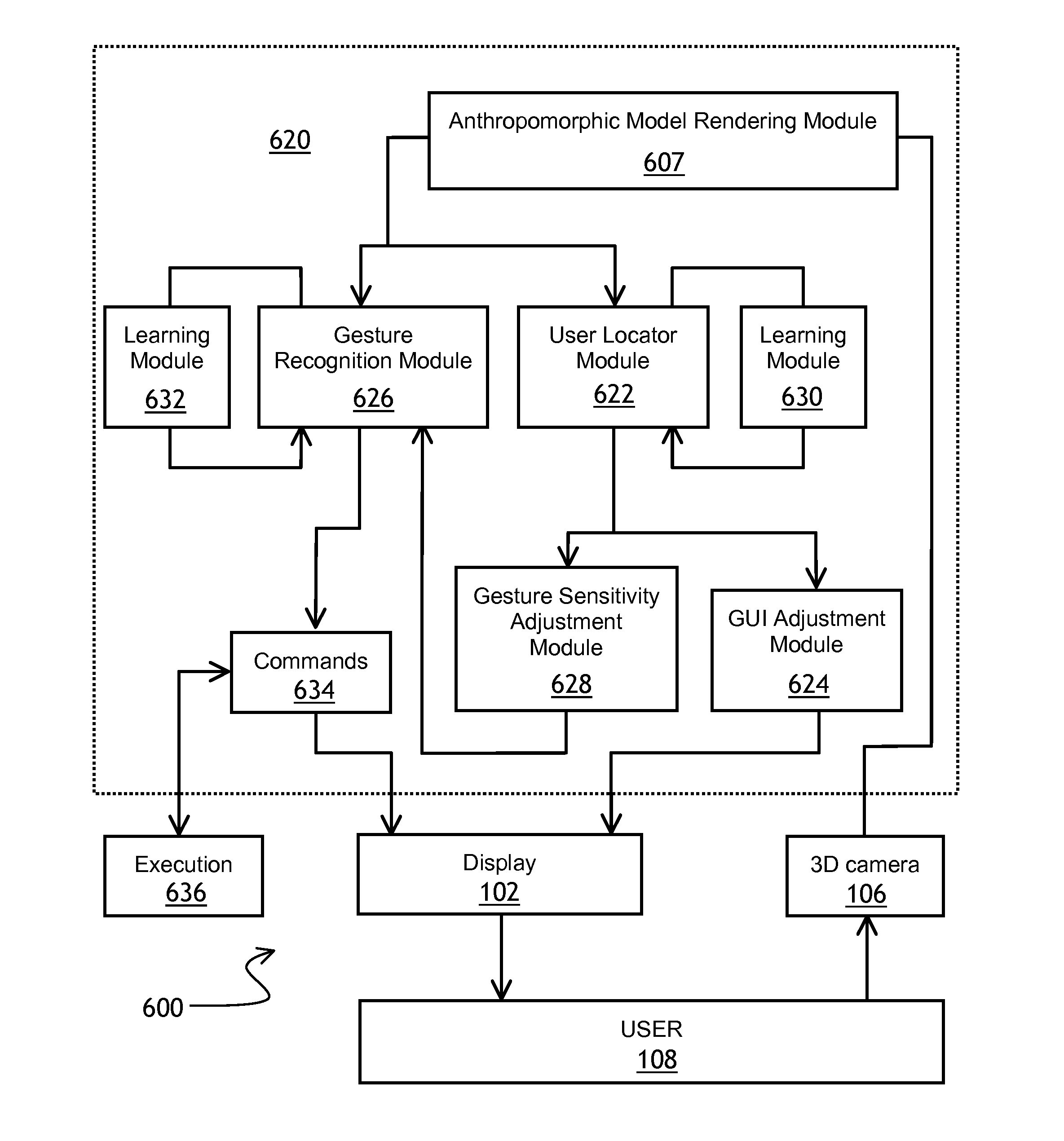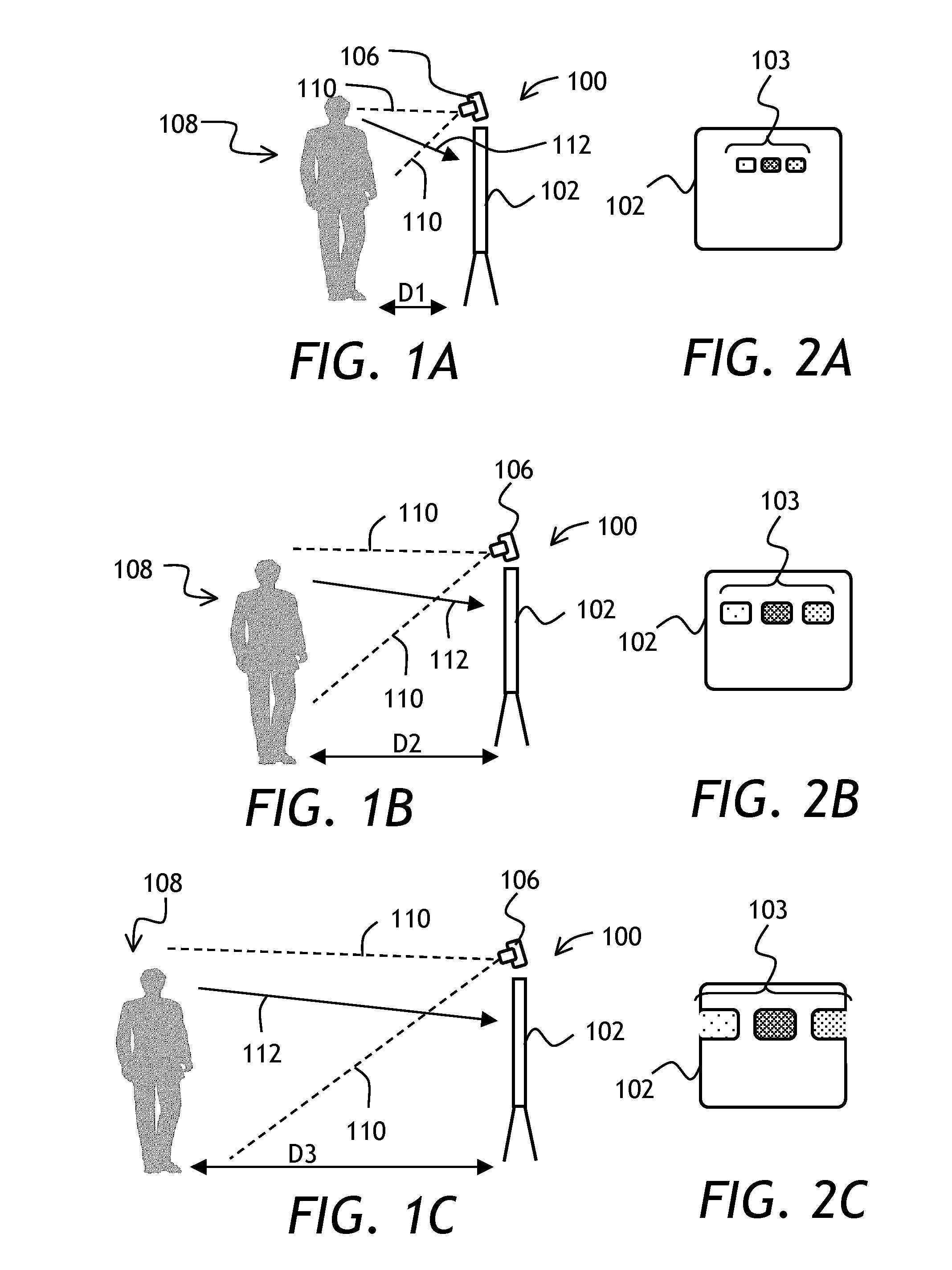Graphical user interface adjusting to a change of user's disposition
a graphical user interface and disposition technology, applied in the field of human-machine interaction, can solve the problems of limiting the effectiveness of gesture-based interfaces, affecting the effect of gesture-based interfaces, and user positions and angles that can vary with respect to display monitors, so as to lessen the effect of visible shape or size changes
- Summary
- Abstract
- Description
- Claims
- Application Information
AI Technical Summary
Benefits of technology
Problems solved by technology
Method used
Image
Examples
Embodiment Construction
[0032]While the present teachings are described in conjunction with various embodiments and examples, it is not intended that the present teachings be limited to such embodiments. On the contrary, the present teachings encompass various alternatives, modifications and equivalents, as will be appreciated by those of skill in the art.
[0033]Referring to FIGS. 1A to 1C, a user interface 100 of the invention includes a display 102 displaying a plurality of graphical objects, in this case soft buttons 103, and a spatial detector 106 for detecting a distance, a viewing angle, or both, of a user 108 relative to the display 102. In the embodiment shown, the spatial detector 106 includes a time-of-flight based depth detecting camera or a display-embedded depth detecting camera module, which illuminates the user 108 with pulsed or modulated infrared beams 110, and obtains an image of the user 108 in infrared light using a time-gated or phase-sensitive detector array, not shown. Other methods o...
PUM
 Login to View More
Login to View More Abstract
Description
Claims
Application Information
 Login to View More
Login to View More - R&D
- Intellectual Property
- Life Sciences
- Materials
- Tech Scout
- Unparalleled Data Quality
- Higher Quality Content
- 60% Fewer Hallucinations
Browse by: Latest US Patents, China's latest patents, Technical Efficacy Thesaurus, Application Domain, Technology Topic, Popular Technical Reports.
© 2025 PatSnap. All rights reserved.Legal|Privacy policy|Modern Slavery Act Transparency Statement|Sitemap|About US| Contact US: help@patsnap.com



